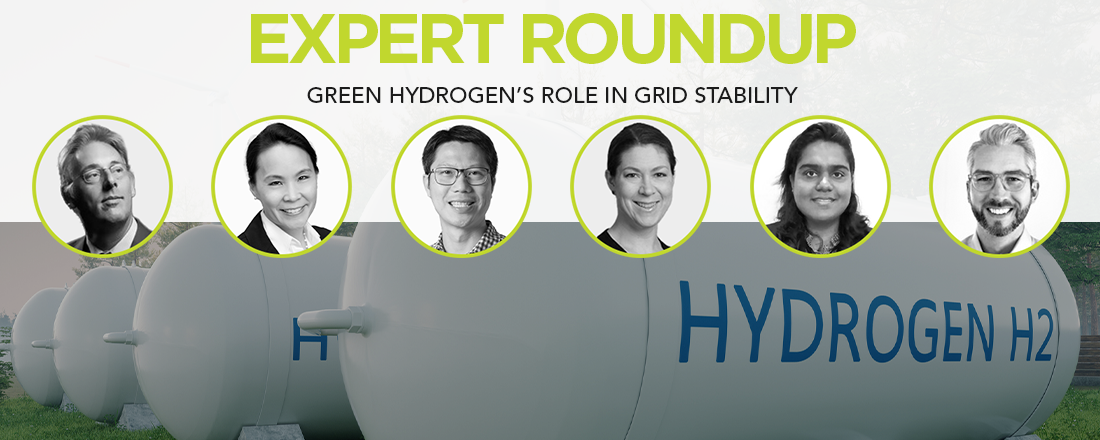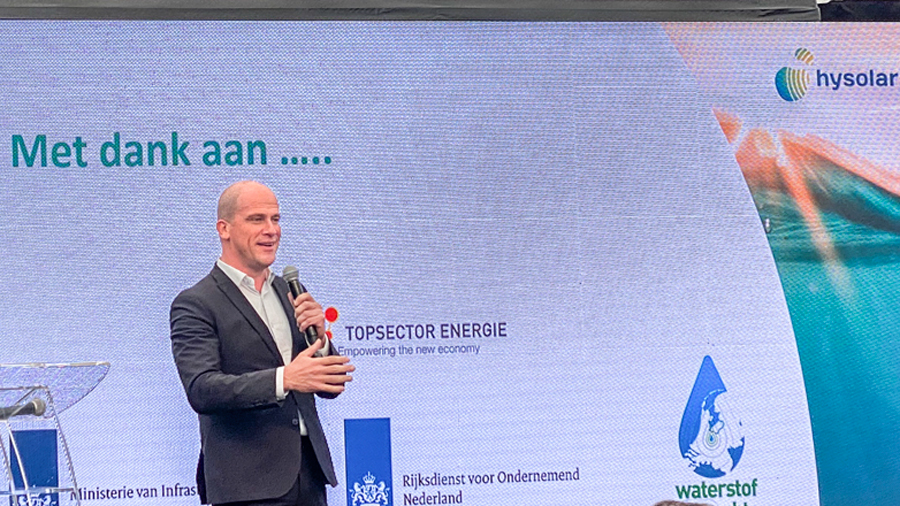To keep global warming below 1.5 C, our energy systems need to be carbon emission free latest by
2050, and many countries have pledged to do so. A high-level model was built for a fictitious economy
called Utopia to assess three pathways towards a zero-carbon economy by 2050: a gradual (linear)
replacement of fossil fuels by clean energy, an accelerated pathway leading to a carbon free system by
2035, and a delayed pathway, in which replacement takes place from 2035 onwards. The model yields
very clear results. The accelerated pathway is not only 21% cheaper than a gradual phasing out of fossil
fuels, with accumulated savings of $4 trillion over a period of 30 years, but also the climate wins, with
emissions reducing from 32.7 GT to 13.1 GT over the same period. On the other end of the spectrum,
the delayed transition is 20% more expensive than the gradual transition, and a whopping $7.7 trillion
more expensive than the accelerated pathway, with 4 times higher emissions of CO2.
It should be noted that the main driver of the cost difference of the three pathways is the price of carbon.
Running the model without a price on carbon yields a level playing field regarding overall cost for the
three pathways. Of course, in the accelerated pathway, CO2 emissions are much lower than the gradual
or delayed pathway, which should be an incentive in its own right.
Author: Ad van Wijk
Speed, the forgotten cost reduction factor in the energy transition
Summary
To keep global warming below 1.5 °C, our energy systems need to be carbon emission free latest by 2050, and many countries have pledged to do so. A high-level model was built for a fictitious economy called Utopia to assess three pathways towards a zero-carbon economy by 2050: a gradual (linear) replacement of fossil fuels by clean energy, an accelerated pathway leading to a carbon free system by 2035, and a delayed pathway, in which replacement takes place from 2035 onwards. The model yields very clear results. The accelerated pathway is not only 21% cheaper than a gradual phasing out of fossil fuels, with accumulated savings of $4 trillion over a period of 30 years, but also the climate wins, with emissions reducing from 32.7 GT to 13.1 GT over the same period. On the other end of the spectrum, the delayed transition is 20% more expensive than the gradual transition, and a whopping $7.7 trillion more expensive than the accelerated pathway, with 4 times higher emissions of CO2.
It should be noted that the main driver of the cost difference of the three pathways is the price of carbon. Running the model without a price on carbon yields a level playing field regarding overall cost for the three pathways. Of course, in the accelerated pathway, CO2 emissions are much lower than the gradual or delayed pathway, which should be an incentive in its own right.
Introduction
The modern energy sector has always been a major source of greenhouse gas emissions, but in recent years, clean energy solutions have been developed that are quickly changing that. With increasing deployment, economies of scale and ever higher efficiencies, modern renewable electricity is now on average cheaper than conventional fossil power and quickly replacing coal, natural gas, and oil power stations all over the world. Renewable electricity can be used directly or used to produce clean molecules such as hydrogen or ammonia, with the ability to fully replace all fossil fuels, also in non-electric sectors. To achieve the Paris Agreement implies a zero-carbon energy system latest by 2050. This paper compares three global, high-level pathways towards that goal and quantifies the relationship between transition speed and overall cost and CO2 emissions.
Utopia
To assess the different pathways, “Utopia” was conceived, a fictitious, developed economy with several hundred million inhabitants in a moderate climate with good renewable energy resources. The people of Utopia drive cars, heat and cool their houses and they have developed several industries based on steel and other mined products. They also grow their own food, for which they produce fertilizers. Their current final energy demand amounts to 10,000 TWh per year and consists of 20% electricity, while 80% comprises natural gas for heating and fertilizer production, coal for power production and steel making, and diesel for transport. Utopia has a well-developed energy infrastructure for electricity and natural gas. In recent years Utopians have adopted an ambitious green electricity strategy and half of Utopia’s electricity is now produced by wind and solar power. Utopia is a signatory to the Paris Agreement and aims to fully decarbonize its economy by 2050. In many ways, Utopia looks like Europe. The current annual final energy consumption of 10,000 TWh is not expected to change because energy efficiency measures keep pace with demand growth. Utopia’s least cost expansion models show that direct electrification should increase 2.5 times to cover 50% of all final energy by 2050, which is roughly in line with global assessments done by the IEA and IRENA. For the remaining 50% of final energy demand, Utopia will use green hydrogen, since their models show that the existing gas pipeline and storage system can be used, which makes hydrogen the cheapest solution. Hydrogen will be used as a transport fuel in addition to electric mobility, to produce high temperature heat, to make steel, fertilizers and chemicals, for cogeneration of electricity and heat and to balance electricity supply and demand. Table 1 shows Utopia’s energy mix in 2020 and the projected mix in 2050.

Model and pathways
For Utopia’s energy system, a high-level cost model was built, using parameters and input described in Table 2. The values for solar, wind and green hydrogen and their development over time were taken from Lazard’s most recent Levelized Cost of Energy Analysis – Version 14.0 and the IEA, whereas other sources were used for the cost of conventional power and fuels. The costs of fossil fuels are assumed to be constant over time until 2050, because frankly, nobody really knows. However, as one of the main policy tools to drive the energy transition, Utopia introduced a carbon pricing mechanism, with CO2 currently at $50/ton until 2025, at $100/ton between 2025 until 2030 and $150/ton thereafter. In addition to generation cost, the cost of electricity grid expansion and additional storage and flexibility has been considered. Utopia has a well-developed infrastructure for fossil fuels, and hydrogen can use the gas grid, natural gas storage infrastructure and fuel distribution system at no or marginal additional cost compared to the current situation.

Using above parameters, three global pathways were calculated and compared: a gradual development pathway, with solar, wind and hydrogen growing linearly and gradually replacing fossil fuels, both for power production, transport, and industrial uses, until 2050, an accelerated growth pathway, where solar, wind and hydrogen replace fossil fuels by 2035, and lastly, a delayed growth pathway, in which green energy starts replacing fossil fuels after 2035. Overall annual costs were calculated and aggregated over the period 2020-2050, considering a 2% inflation rate. Figure 1, Figure 2 and Figure 3 show the key metrics of the gradual, accelerated and delayed scenario over time.



Table 3 contains an overview over the energy mix development for the three modelled pathways, as well as their cumulative costs and emissions for the Utopian society.

Figure 4 shows a comparison of the cost and cumulative emissions for the three scenarios.

Conclusion
As can be seen from the modeling results in Table 3, there is a clear winner when comparing the three transition pathways for Utopia. The accelerated pathway is not only 21% cheaper than a gradual phasing out of fossil fuels, with accumulated savings of $4 trillion over a period of 30 years, but also the climate wins, with emissions reducing from 32.7 GT to 13.1 GT over the same period. On the other end of the spectrum, the delayed transition is 20% more expensive than the gradual transition, and a whopping $7.7 trillion more expensive than the accelerated pathway, with 4 times higher emissions of CO2.
It should be noted that the main driver of the cost difference of the three pathways is the price of carbon. Running the model without a price on carbon yields a level playing field regarding overall cost for the three pathways. Of course, in the accelerated pathway, CO2 emissions are much lower than the gradual or delayed pathway, which should be an incentive in its own right.
Change is hard, and the accelerated pathway introduces a lot of change in a very short timeframe. Many people and organizations will most certainly try to put the brake on the transition, as we have seen in the last decades. We should also realize that such a tectonic shift in a compressed timeframe will certainly not only produce winners, and many assets will have to retire before their economic life would have ended. Many jobs will be lost, although new ones will be created, and it will not be easy to re-direct all the workforce in the new fields. But the message is clear, a faster transition is better and cleaner. And when certain arguments are made to slow down the transition, we should ask ourselves at what price we are willing to accept that.
Energy Voices is a democratic space presenting the thoughts and opinions of leading Energy & Sustainability writers, their opinions do not necessarily represent those of illuminem.Did you enjoy this energy voice? Support us by sharing this article!

About the authors
Frank Wouters is Senior Vice President New Energy at Reliance Industries Limited, Director of the EUGCC Clean Energy Technology Network and Fellow at Payne Institute for Public Policy. He formerly acted as Deputy Director-General of the International Renewable Energy Agency (IRENA).

Ad van Wijk is part-time Professor Future Energy Systems at the Delft University of Technology (TU Delft) in the Netherlands. He is also guest professor at KWR Water Research Institute. Amongst others, he was awarded the titles of Dutch entrepreneur of the year in 2007 and Dutch top-executive in 2008.
Experts Weigh In on Green Hydrogen’s Role in Grid Stability

Green hydrogen is hydrogen fuel that is created through renewable energy technologies. Electrolysis powered by renewable energy splits water molecules into hydrogen and oxygen, capturing and storing the hydrogen for use as a fuel. Using renewable technologies like solar makes this process completely carbon-free. Green hydrogen is one of the newest tools being considered on the path toward a carbon-free future.
We asked green hydrogen experts to address the following question: “Do you foresee green hydrogen playing a key role in grid stability in the transition to 24/7 100% renewable electricity?”. Reviewing their answers, we discovered the following key takeaways:
- Green hydrogen has the potential to play a key role in grid stabilization due to its unique capacity to store carbon-free energy for extended periods of time.
- Advancements in policy, technology, and infrastructure are necessary to make green hydrogen more viable for widespread use.

Janice Lin
President of the Green Hydrogen Coalition and
Founder and CEO of Strategen
“Grid reliability has always been achieved by using energy storage to balance electricity production with electricity demand. In the past, we relied on fossil fuel-based storage. Today, we have much cleaner alternatives such as battery storage. However, transitioning to 100% renewables requires long-duration storage for firm dispatchable power during multiday events when the wind doesn’t blow or the sky is very cloudy.
Green hydrogen is one of the few scalable means to achieve this goal and fully displace fossil fuels for power generation. As an energy carrier, green hydrogen can store mass quantities of renewable energy in the form of a fuel ⎯ a renewable fuel that can be used to generate power and displace fossil fuels in many other applications and sectors. Green hydrogen can not only provide seasonal energy storage to displace natural gas, but more importantly, it can be used in the same equipment and infrastructure that we currently use today. It means that green hydrogen can help facilitate an affordable energy transition.”

Stephen Lamm
Director of Sustainability at Bloom Energy
“Green hydrogen is essential for grid stability in the transition to 24/7 100% renewable electricity. The grid is a multidimensional system, requiring a balance of electricity supply and demand. As renewable penetration increases, we lose some continuity on the supply side, particularly seasonally. Energy storage is then required to balance the grid. Green hydrogen is an exciting storage medium because of its ability to be stored in very large quantities for long durations (months, not hours) and be moved over long distances. The flexibility that green hydrogen provides will be critical to the design and operation of advanced power systems of the future.”

Alex Yip
Associate Professor, Department of Chemical and Process Engineering at the University of Canterbury
“Green hydrogen is a relatively new good and has the potential to create an entirely new economic sector. Less than 1% of the hydrogen produced worldwide today is “green,” or created predominantly by using wind and solar power. To satisfy the demand for green hydrogen, we need additional pathways of production. The capacity of hydrogen produced from biomass is easier to forecast and design because biomass resources are reliable and predictable. We must radically change our hydrogen production by enhancing hydrogen yield from renewable woody biomass paired with CO2 capture, reuse, and mineralization. Assuming enough green hydrogen is generated from various renewable sources, I foresee green hydrogen playing a key role in grid stability in the transition to 24/7 100% renewable electricity.”

Professor Ad van Wijk
Professor of Future Energy Systems at TU Delft

“Hydrogen will play an important role in balancing renewable intermittent electricity production, electricity demand, and grid stability. Hydrogen is a cost-effective way to store energy in large quantities for long periods of time and can complement battery storage. But even more important is that fuel cell technology can provide very flexible and cost-effective electricity to the grid. These fuel cells can be installed in buildings or in neighborhoods, where they can also provide heat. Fuel cells in cars, vans, trucks, buses, and boats can provide flexible power to the grid, with the advantage that the hydrogen can be supplied independently from the electricity grid.”

Nupur Shah
Founder of SustainBhoomi Renewable & EV Consultancy
Policy & Regulatory Expert with Masters in Green Technology
“Green hydrogen adoption will play a vital role in increasing renewable adoption and will provide grid-balancing services. It will improve the return on investment on renewable assets. Fluctuations in energy supply and demand can cause grid instability. Green hydrogen provides the option for long-term storage, which can help balance the difference between energy supply and demand. Green hydrogen can be produced and stored during times of low demand and can be deployed during times of high demand. Improvements are needed to make green hydrogen more economically viable, including technological advancements, a robust hydrogen infrastructure, a conducive hydrogen policy, and introduction of subsidies and rebates from the government.”

Elizabeth Crouse
Tax Partner & Co-Lead of Power, K&L Gates
Co-Director, Seattle Chapter of Women of Renewable Industries and Sustainable Energy
“Yes, eventually. While natural gas is a solution for grid stability right now, the grid ultimately must transition to an alternative power source that is stable and efficient for long-term storage and long-distance transport and that can function as a commodity in applications other than power. Hydrogen is generally well suited for these goals. While it’s true that producing green hydrogen and then converting it back to electricity isn’t the most efficient process, it has the benefit of having completely green inputs and outputs without the need for sequestration or utilization of carbon or the potential for other contaminants. The question is when will we achieve the cost efficiencies and demand for green hydrogen to reach the price point needed to become pervasive in the power and other industries?”
This article appeared on: https://www.mcecleanenergy.org/mce-news/experts-weigh-in-on-green-hydrogens-role-in-grid-stability/
Waterstof: het hele verhaal

Podcasts
Waterstof: het hele verhaal
Waterstof… je hoort er de laatste tijd heel veel over. Je leest erover in de krant. Er wordt over gepraat in het journaal. Bedrijven praten over hun ambities rond waterstof. Vlaamse en Nederlandse overheden stellen hun waterstofstrategie voor. Waterstof heeft een belangrijke plaats in de Europese Green Deal. Het is niet meer weg te denken als één van de oplossingen op weg naar een koolstofarme wereld! Maar wat is waterstof nu juist? Waarvoor kan je het gebruiken? Waarom en wanneer is het duurzaam? Wat zijn de voordelen? En de uitdagingen? En hoe spelen we daar op in?
Je komt het allemaal te weten in de podcasts “Waterstof het hele verhaal”!
Onze collega Davine gaat, samen met experts, in afleveringen van ongeveer een half uurtje, in op de verschillende aspecten van de waterstofeconomie. Elk thema wordt besproken op een makkelijk te begrijpen manier. Tegelijkertijd bevat het voldoende diepgang om de nuances van de discussies te kunnen begrijpen.
We beginnen met een helikopterview waarbij Adwin Martens, dirtecteur van WaterstofNet een helikopterview geeft over hoe waterstof wordt gemaakt en wat de verschillende toepassingen zijn. Daarna gaan we dieper in op de efficiëntie en kosten van waterstof met professor future energy systems Ad van Wijk. In aflevering drie horen we Stefan Neis (projectmanager WaterstofNet) en Maarten van Houdenhove (persverantwoordelijke DATS24) en leren we alles over rijden op waterstof. In aflevering 4 spreekt Davine met Anthony Wang van Guidehouse over waterstoftransport door pijpleidingen en de Europese waterstof ‘backbone’.
Allemaal belichten ze de opportuniteiten maar gaan ze ook de uitdagingen niet uit de weg.
We bieden maandelijks een nieuwe aflevering aan. Topics die nog aan bod zullen komen zijn ondermeer waterstofinfrastructuur, waterstof in de industrie, waterstof in boten, waterstof in het nationaal en Europees Beleid en waterstof en geopolitiek.
Voor wie zijn deze podcasts nu precies bedoeld? Zowel de complete waterstofleek als de geïnformeerde luisteraar die graag iets dieper in het topic wordt ondergedompeld vindt er zijn ding. Na het beluisteren ben je helemaal mee! Je kan de discussies in de actualiteit volgen met een open blik en begrijpt waarom waterstof bijdraagt aan de duurzame wereld van morgen.
Direct naar aflevering 2 van Ad van Wijk: https://www.waterstofnet.eu/nl/podcasts/podcasts-bibliotheek/aflevering-2-waarom-zou-je-waterstof-maken-van-elektriciteit-met-professor-ad-van-wijk
Presentatie en montage: Davine Janssen, projectmanager WaterstofNet
Muziek: Sechunzwanzigminuten (CB 070) by Checkie Brown
Hysolar start productie groene waterstof op terrein KWR
Op het terrein van KWR Water Research Institute in Nieuwegein wordt volgend jaar een begin gemaakt met de productie van groene waterstof. Doel is om jaarlijks 250 ton waterstof te produceren, vertelt Jos Boere, directeur van Allied Waters, spin-off van KWR en initiatiefnemer van Hysolar, het bedrijf dat de groene waterstof op het KWR-terrein gaat maken.
Jos BoereGroene waterstof ontstaat door elektrolyse waarbij water met zogeheten groene elektriciteit wordt gesplitst in waterstof en zuurstof. Voor dat proces is een elektrolyser nodig, die op het terrein van KWR wordt geplaatst. De energie wordt betrokken van een veld met zonnepanelen nabij de KWR-locatie, vertelt Boere. De restwarmte die vrijkomt gaat naar een industriële wasserij. De bouw van de productie-installatie, deels gefinancierd door het Europese LIFE Project, vergt een investering van 3 miljoen euro, aldus de directeur van Allied Waters.
De geproduceerde waterstof wordt geleverd aan het waterstoftankstation in Nieuwegein dat sinds juni in gebruik is en afgelopen vrijdag officieel werd geopend. Het station wordt geëxploiteerd door Hysolar, dat naast Allied Waters in aannemingsbedrijf Jos Scholman een tweede initiatiefnemer heeft en sinds de oprichting in 2019 met de Van Kessel Groep en Scholt Energy er twee strategische partners bij heeft gekregen.
De provincie Utrecht wil zich profileren met een netwerk van waterstofhubs voor mobiliteit en logistiek, wat afgelopen juli werd bekrachtigd met de ondertekening van het mede door KWR ontwikkelde ‘Convenant waterstof in mobiliteit provincie Utrecht’. Zo werd afgesproken dat tot 2025 5 tot 10 waterstoftankstations worden gerealiseerd in de provincie. In Nieuwegein staat de eerste.
Gezuiverd effluent
Onder de vlag van Hysolar Innovatie & Advies voert Allied Waters studies uit en levert advies rond toepassingen van groene waterstof, bijvoorbeeld voor de gebouwde omgeving en voor scheepvaart. Het is de bedoeling om de in Nieuwegein opgedane kennis verder uit te dragen, vertelt Boere. Zo wordt ook gekeken naar de mogelijkheid om bij de productie van waterstof gebruik te maken van gezuiverd effluent uit rwzi’s in plaats van demiwater. Ook is de omvorming van biogas uit slibgisting in waterstof een optie die interessant kan zijn voor de watersector, aldus Boere.
Voor de afzet van de groene waterstof wordt vooralsnog gemikt op zware voertuigen als vrachtwagens, bussen en werktuigen, maar ook wordt de binnenvaart als belangrijke afzetmarkt gezien. Zeker ook omdat Nederland veel binnenvaartschepen telt. Boere: “40 procent van de binnenvaartschepen in Europa vind je in Nederland. Dat is een grote sector met een grote emissiefactor.”
Tot dusverre wordt op het tankstation in Nieuwegein vooral waterstof geleverd aan zware voertuigen. De afname is sinds juni groter dan verwacht, vertelt Boere. Het tankstation krijgt nu nog waterstof geleverd door de firma HyGear uit Arnhem. Boere: “Daar willen we zo snel mogelijk vanaf. We willen met lokaal opgewekte stroom, lokaal waterstof produceren. Als we op volle capaciteit zitten, dan kun je met 250 ton waterstof 750 auto’s of 25 bussen jaarrond laten rijden.”
DIEDERIK SAMSOM: ‘1 MILJOEN TON WATERSTOF IN 2024 IS MAAR EEN BEGINNETJE’
De opening van het tankstation in Nieuwegein werd onder meer opgeluisterd met een inleiding van Diederik Samsom, kabinetschef van Frans Timmermans bij de Europese Commissie en een van de architecten van het klimaatplan Fit for 55, het Europese pakket aan maatregelen om de uitstoot van broeikasgassen met 55 procent te verminderen in 2030.
In zijn toespraak ging Samsom in op de waterstofstrategie, als onderdeel van de Europese klimaatplannen, de inbreng van hoogleraar Ad van Wijk (TU Delft/KWR) in de waterstofstrategie van de EU, de gasprijscrisis en de betekenis van waterstofinitiatieven zoals in Nieuwegein.
Samsom trapte af met de schets hoe de Europese waterstofstrategie is onstaan: “Al heel snel lag het plan op mijn tafel: er moet een waterstofstrategie komen. Ik dacht: wat moeten we nu gaan doen? Toen kreeg ik een telefoontje van Ad van Wijk. Hij begon het gesprek met: weet je wat jij moet gaan doen? Je moet een plan maken met 2 x 40 gigawatt aan waterstof voor 2030. Waarom 2 x 40 gigawatt? 1 x in Europa en 1 x aan de randen van Europa, dan denk je aan Noord-Afrika. Dan denkt u misschien: de Europese Commissie gaat dat idee helemaal tot op de draad uitzoeken, of de lidstaten er wel mee eens zijn, et cetera. Nee. We hebben de ambitie 2 x 40 gigawatt gewoon neergelegd. Zo simpel is het soms. Een goed idee belandt in een grote waterstofstrategie.
1 miljoen ton waterstof
Daarmee was het niet af. 2030 is ver weg. We wilden ook voor 2024 een doelstelling hebben: 1 miljoen ton waterstof. En voor de productie van 1 miljoen ton waterstof in Europa heb je 4 gigawatt aan electrolysers nodig, zo hadden we bepaald. Twéé dagen voordat we de hele strategie zouden gaan lanceren, belt Ad van Wijk en die zegt: ik weet niet wat jullie hebben gedaan, maar 4 gigawatt is helemaal niet genoeg, daar maak je geen 1 miljoen ton waterstof mee. Sommetje gemaakt, en inderdaad: dat was niet genoeg. Om toch op die 1 miljoen ton uit te komen is toen in 5 minuten besloten om van 4 naar 6 gigawatt te gaan. De ambitie in 2024 is dus 6 gigawatt. Onverantwoorde ambitie? Misschien is dat wel zo, maar ik weet wel dat het nodig is. Die 1 miljoen ton waterstof is maar een beginnetje.
Toen we die 6 gigawatt hadden opgeschreven, stond die op geen enkele manier in de boeken van de grote bedrijven in Europa. En sinds we de waterstofstrategie hebben neergelegd, zien we de een na de ander binnenkomen. Zo werkt het ook met overheidsbeleid. Doordat het er staat, denken heel veel bedrijven: we gaan onze investeringsplannen nog eens bekijken. Zo komen we langzaam maar zeker bij die 6 gigawatt. En ik denk dat het lukt.
Coronacrisis
Maar toen kwam de eerste test, de coronacrisis. Ik wanhoopte enigszins. Was er eindelijk een visie met een stip op de horizon en dan komt er iets langs, de coronacrisis, waar alle politici zich op storten, waar al het geld naar toe gaat, met als gevolg dat je nooit meer iets hoort van die prachtige vergezichten.
In 2008 zag je het met de An Inconvenient Truth van Al Gore. In de VS deed het niets, maar Al Gore begeesterde wel de Europeanen en de Europese leiders: klimaatverandering moest de grootste urgentie zijn. Die plannen werden ook gemaakt, maar de inkt was nog niet droog en Lehman Brothers ging failliet. Alle aandacht ging vervolgens uit naar de financiële crisis en van An Inconvenient Truth is niet veel meer vernomen.
Dus ik vreesde in maart 2020 dat dat nog een keer ging gebeuren: alle aandacht, alle geld, alle politieke kapitaal, gaat naar de coronacrisis en we horen niets meer van de Green Deal. Dat is níet gebeurd. Het omgekeerde gebeurde, we hebben 750 miljard euro investeringsgeld toegevoegd aan het plan van de Green Deal om de economie te herstellen. Als je de economie weer opbouwt na de coronacrash, dan kun je dat maar beter in een keer groen en duurzaam herbouwen. De logica die in 2009, 2010 niet opging, gaat dus nu wel op.
En het grote verschil tussen toen en nu is de technologie. In 2008 was net de eerste elektrische auto op de markt, een opgevoerde invalidewagen met een actieradius tot aan het tuinhek. Je had windmolens, die draaiden met 16 cént per kilowattuur subsidie. 16 cent! Als je de hele energievoorziening in Nederland wil verduurzamen met 16 cent per kilowattuur, dan kost dat 17 miljard euro per jaar. Dat verschil van toen met nu, met de nieuwe technologieën, is állesbepalend.
Hoge gasprijs
Nou ja, de échte test, daar zitten we nu middenin: de gasprijs. Het tekort aan gas en daardoor enorme hoge prijzen – als politici ergens zenuwachtig van worden dan is het hoge prijzen voor brandstof. Je hebt maar twee redenen voor revolutie: hoge broodprijzen en hoge energieprijzen, dan komt het volk in opstand. Deze crisis is dus misschien bedreigender dan corona, ook voor wat we met de Green Deal willen.
Dé reactie op hogere olieprijzen was tot dusverre altijd eenvoudig: op zoek naar nóg meer olie. Je kon er lekker mee verdienen en we hadden een tekort, dus. Stel, dat doen nu weer… Deze crisis is echt een crunch time als het gaat om de transitie. De vraag is: kunnen we erin slagen om ook nu een andere reactie dan normaal te bewerkstelligen? We zagen het drie weken geleden in de Europese Commissie al aankomen. We zaten in een soort van war room bij elkaar om te kijken: wat gaan we doen? De discussie ging over: bel de Noren maar, die hebben altijd veel voorraad fossiele brandstof. Trouwens, er werd ook nog even gezegd: bel de Nederlanders maar.
Toen kon ik iets vertellen wat 5 jaar geleden volstrekt onmogelijk was, namelijk: als je alle plannen voor off-shore wind op de Noordzee van Duitsland, de Denen, de Britten, de Noren en de Nederlanders bij elkaar neemt, dan kunnen we het vermogen aan duurzame energie produceren dat we nu nodig hebben. En als we dat omzetten in waterstof dan heb je dezelfde orde grootte aan gas die we nu tekortkomen door deze gascrisis. Sterker nog: je hebt veel meer. Ofwel: voor het eerst in de geschiedenis van de olie- en gascrises heb je nu de mogelijkheid om een alternatief te laten zien wat serieus mogelijk is.
En nu komt het erop aan: zijn we in staat om snel extra vermogen aan duurzame energie neer te zetten, de waterstofproductie daaraan te koppelen en te integreren in onze huidige energievoorzieningen, zodat we daarmee de volgende energiecrisis vóór zijn.
Daarmee kom ik terug bij de ambitie van 2 x 40 gigawatt in 2030 en dit project in Nieuwegein. Dit is een voorbeeld waarvan er miljoenen moeten komen in Europa de komende 5 à 10 jaar. Dit is het begin van iets heel moois. Het moet in de praktijk gebeuren.”DE WATERSTOFSTRATEGIE VAN DE EUROPESE UNIE IN 3 FASEN- Van 2020 tot 2024 ondersteunt de Europese Commissie de installatie van ten minste 6 gigawatt aan groene waterstofelektrolyse in de EU en de productie van maximaal 1 miljoen ton groene waterstof.
– Van 2025 tot 2030 moet waterstof een intrinsiek onderdeel worden van het energiesysteem, met ten minste 40 gigawatt aan hernieuwbare waterstofelektrolysers en de productie van maximaal 10 miljoen ton groene waterstof in de EU.
– Van 2030 tot 2050 moeten groene waterstoftechnologieën tot volle ontwikkeling komen.
Bron: H20waternetwerk
Waterstofseminar 2021
Dutch-Israeli mini symposium Clean Hydrogen
Koplopers Nederland Waterstofland
Het Nederlands bedrijfsleven kiest voor het versnellen van de waterstofeconomie. Voor de werkgelegenheid, voor de economie én voor het klimaat.
Meer dan 80 Nederlandse bedrijven hebben de handen ineengeslagen en zich verenigd in de gelegenheidscoalitie Koplopers Nederland Waterstofland. De coalitie bestaat uit bedrijven uit de hele waterstofketen én daarbuiten: producenten, industrie, mobiliteit, techniek en advies. Van innovatieve startups tot grote multinationals, zij formuleerden elk een individueel commitment. De verzameling hiervan ligt nu voor u, het ‘Waterstof-commitments Bidbook’.
Een boek vol toewijding, concrete plannen, projecten en investeringen om te laten zien dat het bedrijfsleven van waterstof in Nederland een succes gaat maken.
Het bidbook toont een uniek overzicht van nieuwe waterstofprojecten en concrete plannen van bedrijven:
• Dieselaggregaten en machines op aardgas worden in dit bidbook omgebouwd tot mini-elektrolysers, waterstofaggregaten en -machines. In te zetten bij festivals, bouwprojecten, op campings, in fabrieken van koekjes, brood en meer. Alles plug and play.
• Bedrijven die hun schepen, vrachtwagens, zware bedrijfswagens en personenauto’s willen vervangen voor transport op waterstof; bedrijven die deze voertuigen leveren én bedrijven die de tankinfrastructuur hiervoor aanleggen en de waterstof leveren;
• De aanleg en aanpassing van offshore windparken, van grootschalige ondergrondse infrastructuur en specifieke installaties bovengronds. Van wind op zee naar waterstofgebruik achter de voordeur van een industriebedrijf of woning;
• De bouw van waterstoffabrieken en elektrolysers bij industrie- en chemiebedrijven om in de toekomst de CO2-uitstoot te verminderen.
Handreiking en oproep aan de overheid
Tegelijkertijd is dit Bidbook concrete handreiking en oproep aan de overheid als onmisbare schakel in de waterstofketen: willen we niet achteropraken bij onze economische en klimaatdoelen en bij de ontwikkelingen van de landen om ons heen, dan moeten we nu opschalen aan zowel de vraag als de aanbodkant. Laten we gezamenlijk aan de slag gaan. We hebben alles in huis: de kennis, ervaring, ligging én bedrijven. Samen maken we Nederland Waterstofland!
Namens de Missie H2 initiatiefnemers, Gasunie, Toyota (Louwman Group), Groningen Seaports, Remeha, Shell, Stedin Groep en Port of Amsterdam
Koplopers Nederland Waterstofland
Wienerberger Annual Report contribution
Tailwind for Hydrogen. Hydrogen – a substance with a future
“THERE IS NO ALTERNATIVE TO GREEN HYDROGEN”
Professor van Wijk, green hydrogen is regarded as the key to the energy system of the future. What is it that makes this gas so special?
Van Wijk: There are two main reasons why green hydrogen is important. First of all, renewable energies are normally produced in regions where demand is low. Take the example of offshore wind parks. Hydrogen is an excellent and inexpensive storage medium for the transport of electricity to consumers around the world. It can also be imported at low cost. Second, green hydrogen can be used directly, for instance as truck fuel, in industrial processes, and to heat buildings.
Transport, industry, buildings: Green hydrogen is used for decarbonization in many areas. Where do you see its greatest potential?
Van Wijk: There is great potential in all these areas: For example, if processes in the chemical industry are to be decarbonized, there is no alternative to green hydrogen, be it for the produc- tion of fertilizer or plastics. Interesting projects have also been launched in the steel industry. In Austria, for example, hydrogen is used in steel production.
Which role do you think green hydrogen will play in achieving the EU’s climate neutrality target by 2050 and the targets of the Paris Climate Agreement?
Van Wijk: By 2050, green hydrogen must have become an essential part of the energy mix, which I think will consist of 50% electricity, mainly from solar and wind power, and 50% hy- drogen. We must not forget that green hydrogen is produced from clean electricity. The energy system will be electricity-based, but part of the renewable energy will be converted into hydrogen for transport and storage reasons.
A massive increase in the use of green hydrogen is part of the EU’s strategic vision. What needs to be done to reach this goal?
Van Wijk: Currently, hydrogen accounts for 2% of the global energy consumption. The primary sources of energy are fossil fuels, such as natural gas. However, things are beginning to change. Five years ago, nobody would have thought that we would be able to transport renewable energy all over the world, simply because it was so expensive to produce. Today, the cost of solar and wind energy has decreased drastically. On average, the most cost-efficient options are roughly between 1 and 2 cents per kilowatt hour. This is the reason why green energy is becoming more and more relevant.
Now the time has come for the next step: There are regions on this planet, such as the Sahara Desert, that have enormous potential for renewable energy. This resource must be tapped in the coming years. We have to abandon the idea of generating renewable energy solely in our immediate environment.
What will be needed in the upcoming years in terms of political conditions and technological developments?
Van Wijk: As a professor at a university of technology, I can tell you that the necessary tech- nology has already existed for 100 years. However, electrolyzers are currently being used for the production of chlorine from salt dissolved in water. We have to adapt them specifically for hydrogen production. And we have to convert the existing natural-gas infrastructure to an in- frastructure for hydrogen. That’s not something a company can do; it’s a task to be taken on by governments. Now is the time to do it, given the need to stimulate the economy after the Covid-19 pandemic.
What is your personal vision of the energy system of the future? What are your hopes and expectations?
Van Wijk: We still have great challenges ahead of us. I am currently involved in the European Union’s work on hydrogen legislation. If we deal with hydrogen merely in a subparagraph of major energy regulations, there will never be a system change. Apart from the energy targets, we also have to bear in mind the opportunities offered by green hydrogen. For example, step- ping up the production of hydrogen in Northern Africa will create jobs and generate economic growth. This could be a way to reduce emigration from that region. Europe, for its part, has the potential to become the global leader in industrial electrolysis. If we succeed in creating the appropriate political framework for these developments, a sustainable energy future will come within reach.
https://www.wienerberger.com/en/annual-report.html#!/en/WkMlnB9q/tailwind-for-hydrogen/?page=1
De 10 Waterstof / the 10 hydrogen commitments
De 10 waterstof commitments van Nederland
- Wij zullen waterstof liefhebben gelijk wij ook elektriciteit lief hebben.
- Wij zullen onze bedrijven én consumenten toegang en recht geven op waterstof.
- Wij zullen schone waterstof gelijk behandelen naar gelijke koolstofinhoud.
- Wij zullen onze windrijke wateren ruimhartig openstellen voor grootschalige waterstofproductie .
- Wij zullen, zonder onderscheid van herkomst, schone waterstofimport ten volle stimuleren.
- Wij zullen onze gasinfrastructuur, opslagfaciliteiten, tankinfrastructuur en havenfaciliteiten ruimhartig
en spoedig geschikt maken voor waterstof. - Wij zullen onze elektriciteit- en waterstofsysteem intelligent koppelen teneinde eenieder altijd en
overal van schone energie te kunnen voorzien. - Wij zullen het toepassen van schone waterstof voor iedereen bespoedigen en stimuleren via belonen
en beprijzen, via quota en caps. - Wij zullen schone waterstof productie, transport, vraag, innovatie en bedrijvigheid ruimhartig
financieel ondersteunen voor een schone, gezonde en krachtige economie, werkgelegenheid, milieu
en leefomgeving. - Wij zullen ons gezag doen gelden om zo spoedig mogelijk waterstof wettelijk te verankeren en de
transitie naar waterstof voortvarend te regiseren.
English
- We shall love hydrogen as we love electricity.
- We shall give our companies and consumers access and rights to hydrogen.
- We shall treat clean hydrogen equally according to equal carbon content.
- We shall generously open our windy waters to large-scale hydrogen production.
- We shall, without distinction of origin, fully stimulate clean hydrogen imports.
- We shall generously and soon make our gas infrastructure, storage facilities, fuelling infrastructure
and harbour facilities suitable for hydrogen. - We shall intelligently link our electricity and hydrogen system in order to provide everyone with clean
energy anytime, anywhere. - We shall accelerate and stimulate the application of clean hydrogen for everyone through rewards
and pricing, through quota and caps. - We shall generously financially support clean hydrogen production, transport, demand, innovation
and business for a clean, healthy and powerful economy, employment, nature and living
environment. - We shall exercise our authority to legally anchor hydrogen as soon as possible and energetically
direct the transition to hydrogen.


